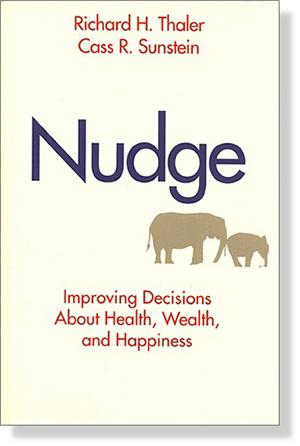Few words elicit a wider spectrum of emotions in a complex software implementation project, particularly in the ETRM space.
Energy company operations, back office, middle office, and front office end-users are immediately attracted to the glitter of optionality and customization. After all, who doesn’t enjoy having total control over choosing their own personal preferences? Like Burger King himself said, “Have It Your Way.”
Conversely, project managers, developers, and executive staff often view configurability in a much different (and typically dimmer) light. They hear the word and envision lengthy project scoping requirements, user acceptance hassles, longer training horizons, and ultimately missed milestones. Oh, and additional expense. PMs know that excessive optionality in an ETRM solution can increase indecisiveness, reduce engagement, and potentially result in post-implementation dissonance, the exact opposite of what end users thought configurability would offer.
Not having the entire team on the same page is not a great way to initiate a new ETRM project and should signal risk in and of itself.
Behavioral Science & Choice
While logic seems to dictate that if a choice is good, then more choices are better, recent behavioral science indicates quite the opposite. Renowned psychologists Barry Schwartz, Danny Kahneman, Amos Tversky, and Sheena Iyengar, as well as economist Richard Thaler, have all produced extraordinary study findings that indicate happiness is actually reduced as choices increase.
Let me focus on Dr. Iyengar’s seminal 2000 “Jam Study,” in which she (and her colleague Mark Lepper) found that sales were likely to increase (on average) by 27% simply by giving buyers less choice. Dr. Iyengar noted that choice overload reduces three important things:
- Engagement
People often decide not to decide. Iyengar’s findings were foundational to an associated study, “Can There Be Too Much Choice in a Retirement Savings Plan?” and indicated that more mutual fund choices drove an increasing number of plan participants to not select an option at all. - Decision Quality
People make poorer decisions as choice multiplies. In the retirement study example, excessive choice led people to delay their plan selection or not choose at all. - Satisfaction
Choice overload reduces overall satisfaction and tends to cause regret with options we did not select.
Two associated (and terrific) TED Talks by Dr. Iyengar reinforce how businesses can improve the experience of choosing.
“Maximizers & Satisficers”
The composition of a software integration team is often one of the most underrated elements of a project. Deciding to enlist the ‘smartest people’ is an easy accommodation that does not guarantee success. A veteran PM understands – just as psychologists have proven – that people (even the smartest ones) adopt one of two primary decision-making roles and that each approach can strongly influence project outcomes.

The Maximizer wants to make a decision that creates the greatest benefit over the long term and prides itself on making the most informed, intelligent choices.

The Satisficer (not misspelled, by the way) incorporates more modest decision-making criteria and, ultimately, looks for choices that are “good enough.”
The winner?
Turns out, Maximizers generally do not make superior, more satisfying decisions. The implied streak of perfectionism, more prevalent in the Maximizer, can cause internal stress and unrealistic expectations for them and for others.
Conversely, Satisficers know that a project will demand hundreds of decisions, and thus, they try to avoid getting “wrapped around the axle” on each one. In the end, they are comfortable with not being perfect on every choice that has to be made.
We should find it unsurprising, then, that PMs generally prefer to surround themselves with a higher percentage of Satisficers versus Maximizers.
Good Enough vs. Nice-to-Have
If you’ve ever bought a home, you’ve faced a Good Enough versus Nice-to-Have (GE-v-N2H) decision. For example, you buy a nice house and then make a wish list of everything you want to do to make it your dream place. Then, you price out the list and discover you don’t really have that extra $50,000 it’ll take to acquire it all. Suddenly, GE-v-N2H becomes crystal clear.
Like homebuyers, energy companies today are constantly forced to stare down ever-increasing budget challenges for software. Generally, the GE-v-N2H decision comes after the board has approved a dollar figure, which is all too often less than what was requested. There are few (if any) CEOs who want to go back to a budget-conscious board and ask for additional funds after they’ve been allocated.
Strong project managers identify the Maximizers and Satisficers because they know their project team will encounter numerous GE-v-N2H decision points. Great PMs “nudge” their teams toward the former approach and away from the latter.
Executive Support
Even a great PM can only do so much. Without strong executive support behind a project, achieving critical milestones on time and within budget becomes far more difficult. Executives should be keenly aware of the potentially negative financial (and other) impacts of over-customization and endless one-off requests, a dynamic profile in “The Tyranny of Choice” by Dr. Barry Schwartz (who also gives a great TED Talk on the topic).
“…manufacturers keep offering new products or new versions of old products as if we needed more variety. The lesson of my research is that developments in each of these spheres may well rest on assumptions that are deeply mistaken.”
Dr. Barry Schwartz
Executive support requires much more than simply a presence at the inaugural kick-off meeting and must include routine check-ups and active participation in those inevitable (but hopefully infrequent) instances when a project seems ready to careen off a cliff.
When faced with requests for customization or one-off enhancements to a base software package, an insightful executive will ask questions such as:
- What makes us so unique that we need to perform this process differently?
- Given the potentially expensive customizations of the ETRM software, can we utilize its out-of-the-box functionality to make our energy scheduling and risk management/trading processes more efficient?
- Could one of our teams take on some additional project management or implementation-related work that would allow other groups to work on higher-priority, value-added tasks?
- What’s the best decision for the company overall?

Nudge for Good
In the book, “Nudge,” Richard Thaler writes about choices, how we make them, and how we are led to make better ones. I highly encourage you to pay the $5 on Amazon and purchase a used copy, as it makes for useful reading prior to any ETRM software implementation.
Thaler introduces the concept of “libertarian paternalism,” essentially stating that it’s possible and legitimate for both public and private institutions to influence behavior while simultaneously respecting freedom of choice. The concept is highly applicable to ETRM software integrations, charging both PMs and executives to (a) clearly delineate between the big and small ‘stuff’ and (b) lead in a way that affects better choices and outcomes.
Seize a Rare Opportunity
Large-scale ETRM software rollouts guarantee a series of choices, some of which can significantly impact your business. But these decision points also offer momentary pauses to perform health checks on current business processes and procedures. Outside of these projects, staff from across the enterprise (analytics, operations, front, mid, back office, etc.) come together more formally only once or twice every seven to ten years to systematically review and modify practices that can have long-term consequences for the organization.
These choices will set precedents that can become extremely difficult to unwind down the road, and thus, they demand courageous, innovative leadership, as well as focused attention and consideration from a broad cross-section of your organization.
Embrace Change & Pick the Right Partner
Successful projects generally begin with a definition of current business practices paired with a subsequent, vigorous, and constructive internal conversation that should challenge the status quo. Every day, automation, artificial intelligence (AI), and machine learning become a bigger part of our lives at home and at work. Embracing change and all of the capabilities designed into scalable, intelligent energy industry software that replaces manually performed tasks frees us to focus on greater value-added (and more personally fulfilling) activities.
It is critical to extract all of the potential efficiency gains from an appropriately scoped and deployed ETRM software platform that can scale to meet future changes in the wholesale power markets. PCI’s ETRM solution is such a platform that offers configurable rather than ‘customized solutions meeting standard (slightly different but similar) ETRM requirements. Especially if you are transacting in North American ISO/RTO-controlled markets (AESO, CAISO, ERCOT, IESO, ISO-NE, MISO, NYISO, PJM, SPP, and MEM), the need for having a separate ETRM platform to augment a market operating system is fading away fast.
Leverage Your Investment: Avoid Customization & One-Offs
The “Have It Your Way” mindset can indeed reduce staff engagement, optimal decision quality, and satisfaction with your ETRM project implementation, which is one of the most mission-critical and expensive technology investments any energy company can make.
Ever-changing power markets (and other factors) are pushing us toward an increasingly decentralized energy supply future. Given this dynamism, it is vital to partner with a software vendor whose experts continually track the evolving rules, policies, and procedures that govern and drive markets.
By the way, Burger King recognized the need for change and ditched “Have It Your Way” back in 2014 for “Be Your Way.” Let us heed BK, and other more recent corporate Marketing message shake-ups, to understand that even traditionally recognized best practices in software implementation should challenge the status quo to reduce the tyranny of choice.
If you’re considering getting an ETRM system or moving vendors, take a look at our blog post: How to Write Functional Requirements for an ETRM System
Learn more about PCI’s ETRM software solution.






